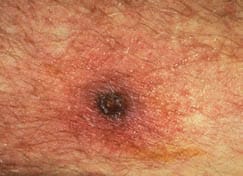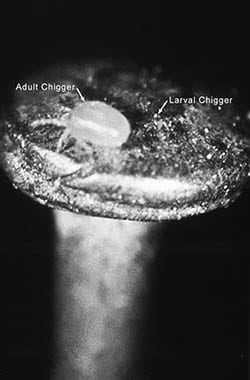Scrub Typhus, Mysterious Fever Gripping Parts of Uttar Pradesh
There has been widespread concern about the spread of scrub typhus in the region. All you need to know about it is here.
Mystery fever from parts of Uttar Pradesh, mostly kids for the past one week has been reported, claiming more than 40 lives. Scrub typhus has been found in the viral fever.
Scrub typhus was primarily reported from Uttar Pradesh’s Firozabad, Agra, Mainpuri, Etah and Kasganj.
CEO Yogi Adityanath has visited this region and confirmed the disease causes the death of 32 children and 7 adults. He said that a team of Lucknow’s Medical University King George’s experts would test the deaths especially of children due to scrub typhus and find out why the outbreak was taking place. In the aftermath of the scrub typhus outbreak, the Uttar Pradesh government transferred the Firozabad chief medical officer. The situation was taken up by an Indian Council of Medical Research (ICMR) team.
ollocard.com Activate and Login Account : How to Activate Ollo Mastercard
There has been widespread concern about the spread of scrub typhus in the region. Another team of 15 Lucknow doctors visited the areas concerned to realise the situation.
What’s the mysterious fever typhoid scrub?
Scrub typhus, also known as bush typhus, is a disease caused by a bacteria called Orientia tsutsugamushi. Scrub typhus is spread to people through bites of infected chiggers (larval mites). The most common symptoms of scrub typhus include fever, headache, body aches, and sometimes rash. Most cases of scrub typhus occur in rural areas of Southeast Asia, Indonesia, China, Japan, India, and northern Australia. Anyone living in or traveling to areas where scrub typhus is found could get infected.
Rickettsial infection, previously reported in India and other South Asian Countries, is a reemerging Rickettsial infection. It is a disease that is transmitted by a vector. It begins with fever and rashes and has implications for the central nervous system, the cardiovascular, the renal, respiratory and gastrointestinal systems.
The US National Library of Medicine states that a vector carries its name “scrub” due to the type of vegetation (ground between forests and clearings). The Greek word “typhus” means stupor or smoke for “fever.”
More than 1 billion individuals are at risk of scrub typhus worldwide and estimated to occur annually in 1 million cases.
ESPN Activate: Espn.com/watch/activate – Enter activation code
Signs and Symptoms
Symptoms of scrub typhus usually begin within 10 days of being bitten. Signs and symptoms may include:

Figure 1. Eschar at site of chigger bite
- Fever and chills
- Headache
- Body aches and muscle pain
- A dark, scab-like region at the site of the chigger bite (also known as eschar)
- Mental changes, ranging from confusion to coma
- Enlarged lymph nodes
- Rash
People with severe illness may develop organ failure and bleeding, which can be fatal if left untreated.
Diagnosis and Testing
- The symptoms of scrub typhus are similar to symptoms of many other diseases. See your healthcare provider if you develop the symptoms listed above after spending time in areas where scrub typhus is found.
- If you have recently traveled, tell your healthcare provider where and when you traveled.
- Your healthcare provider may order blood tests to look for scrub typhus or other diseases.
- Laboratory testing and reporting of results can take several weeks, so your healthcare provider may start treatment before results are available.
Treatment
- Scrub typhus should be treated with the antibiotic doxycycline. Doxycycline can be used in persons of any age.
- Antibiotics are most effective if given soon after symptoms begin.
- People who are treated early with doxycycline usually recover quickly.
Prevention

Figure 2. Adult and larval chiggers (mites) on the head of a pin
- No vaccine is available to prevent scrub typhus.
- Reduce your risk of getting scrub typhus by avoiding contact with infected chiggers.
- When traveling to areas where scrub typhus is common, avoid areas with lots of vegetation and brush where chiggers may be found.
Be the first to comment